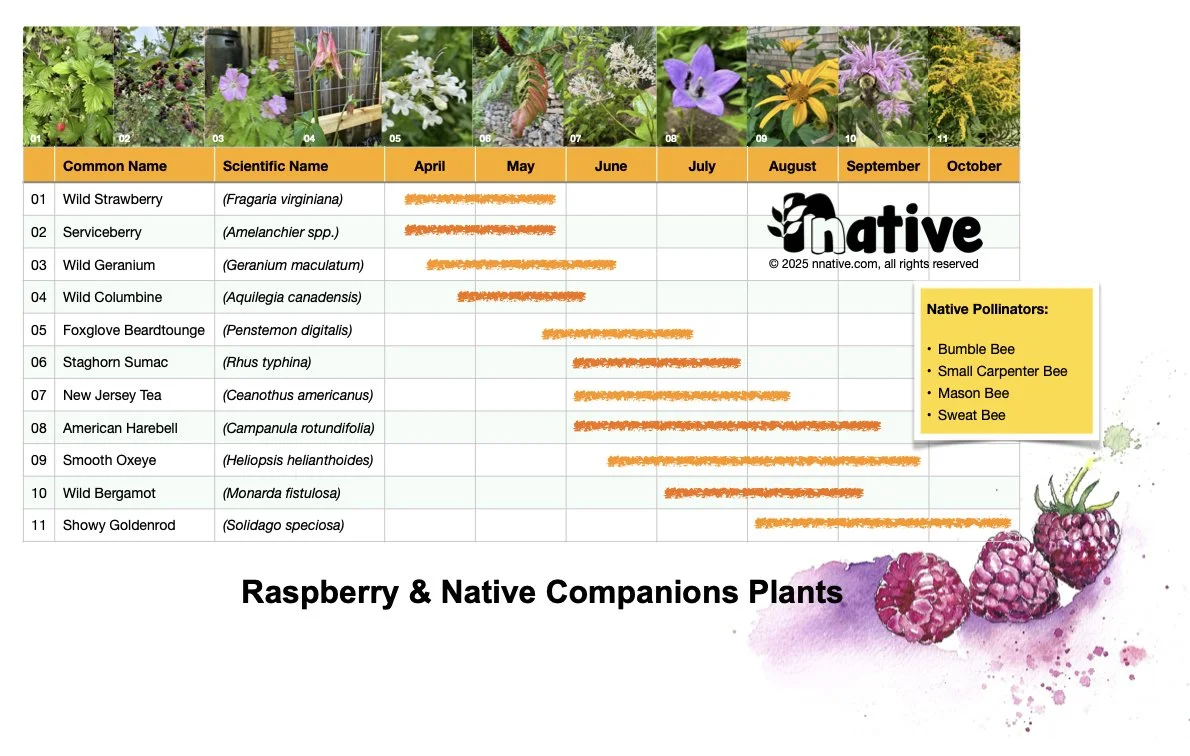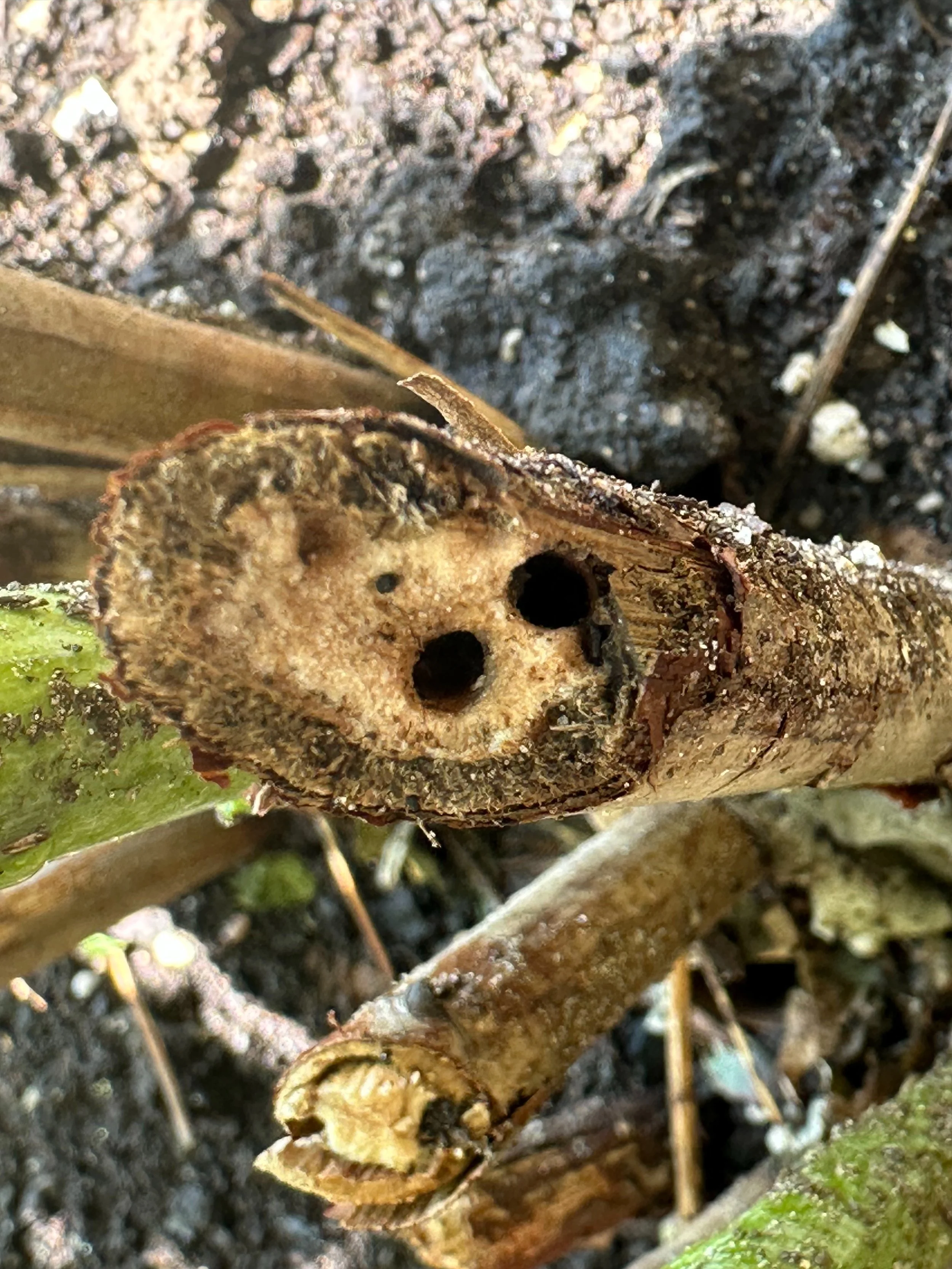Raspberries & Companions
By focusing on a single plant and its companions, we can gain a deeper understanding of the concept of companion planting. Choosing plants that bloom continuously throughout the season ensures a steady presence of pollinators in the area. Everbearing raspberries, for instance, bloom twice a year—once in late spring and again from late summer to fall, continuing until the first frost. During periods when the raspberries are not flowering, it is crucial to provide alternative native blooms to support local pollinators. Native flowers that bloom in April, June, and July play a vital role in sustaining these pollinators, bridging the gaps in food availability.
In Focus: The Small Carpenter Bee
One busy raspberry pollinator is the Small Carpenter Bee. These bees are most active during the warmer months, so understanding their lifecycle can help you tailor your garden care to their needs. For example, avoiding heavy pruning during their nesting and rearing periods is essential. It’s also worth noting that the Small Carpenter Bee is a gentle species, posing minimal risk to humans, making it a wonderful garden companion.
The Small Carpenter Bee is known for nesting in soft, pithy stems, such as the cut ends of old raspberry canes. This means that raspberries not only provide them with food but also offer an essential resource for constructing their nests. When pruning raspberries, be sure to leave enough cane to support their habitat. To further encourage nesting, consider leaving the stems of other hollow-stemmed plants, like elderberries or sumac, over the winter.
(Picture: Old Raspberry Cane Used for Nesting)
While raspberries are a key resource, these bees cannot survive on them alone. They require companion plants for additional sustenance. Because of their short flight radius, they stay close to their nests, which ensures they remain nearby. Planting native flowers with staggered bloom times (as shown above) provides vital food sources during periods when raspberry flowers are not in season.
By offering both food and shelter, you can help the Small Carpenter Bee thrive and continue pollinating your raspberries. Interestingly, these bees sometimes cohabitate with other females, which is a behavior distinct from the solitary Large Carpenter Bee. In some species, females are even parthenogenetic, meaning they produce offspring without males through genetic cloning.



